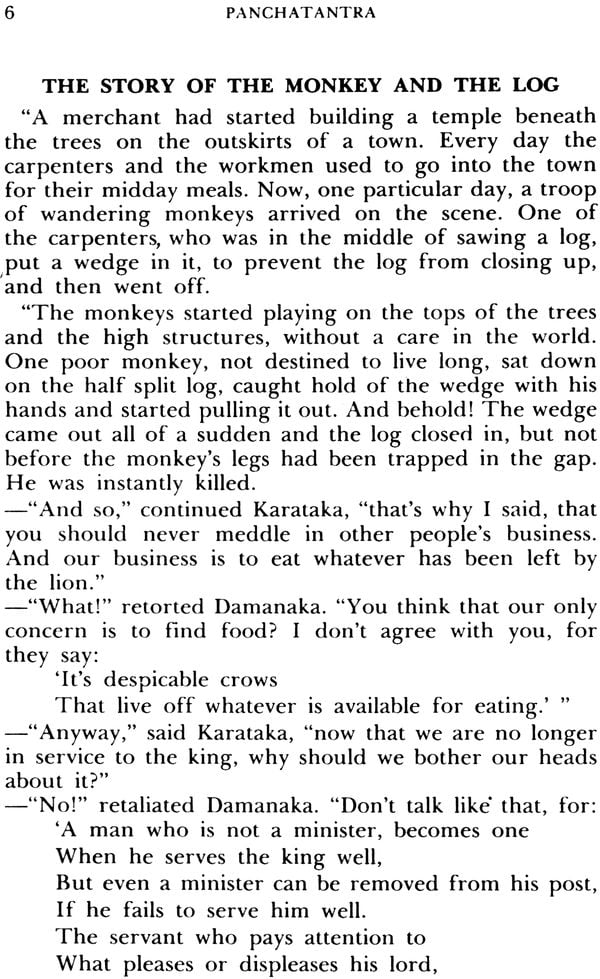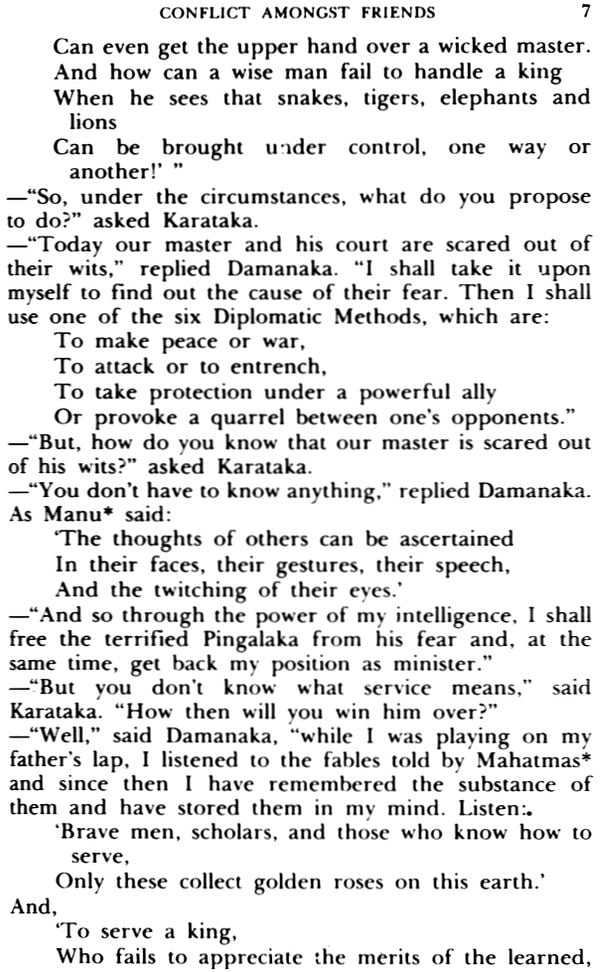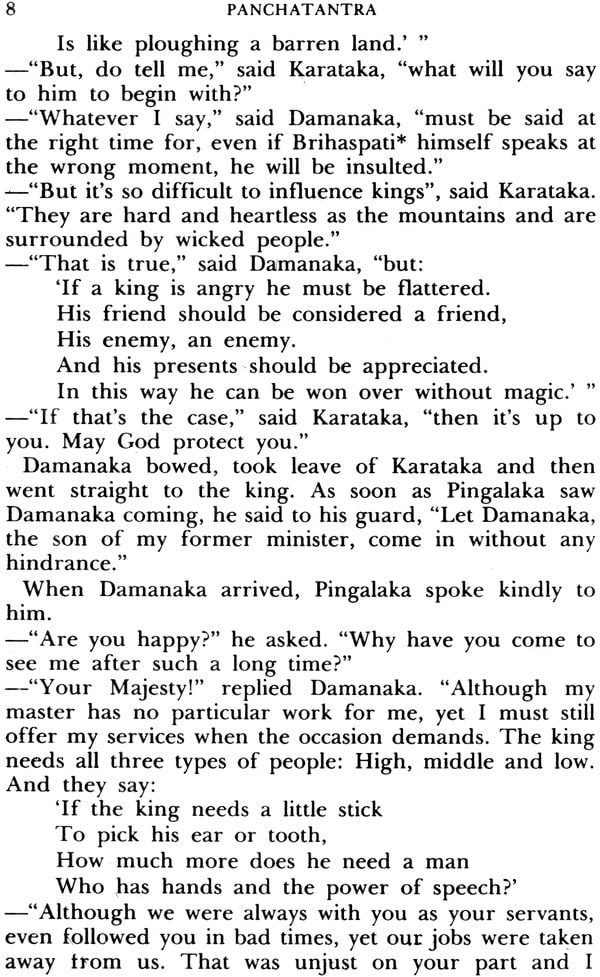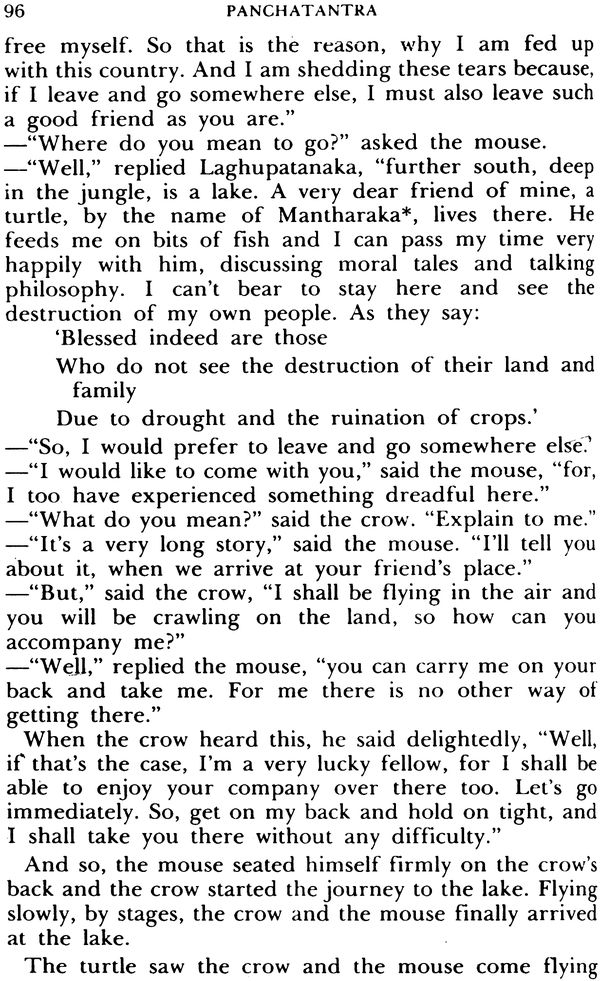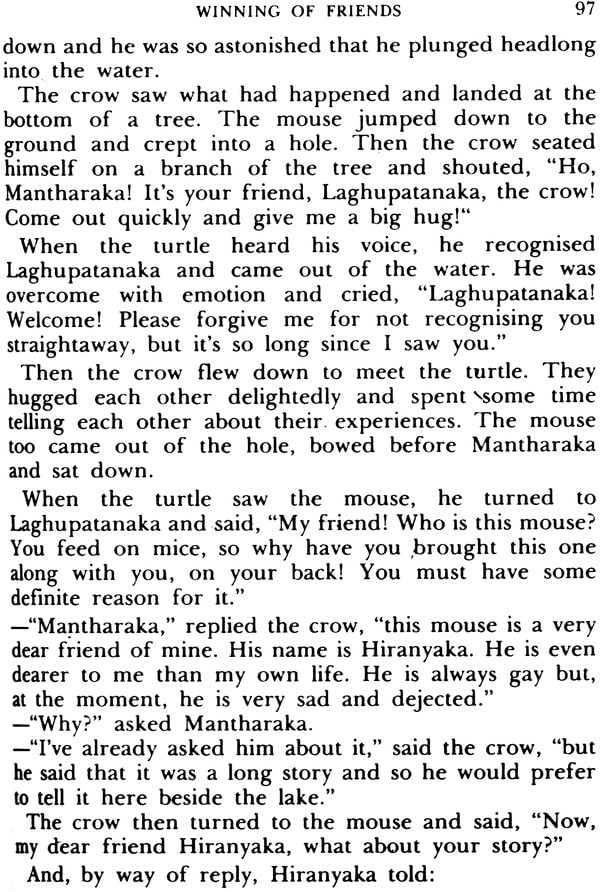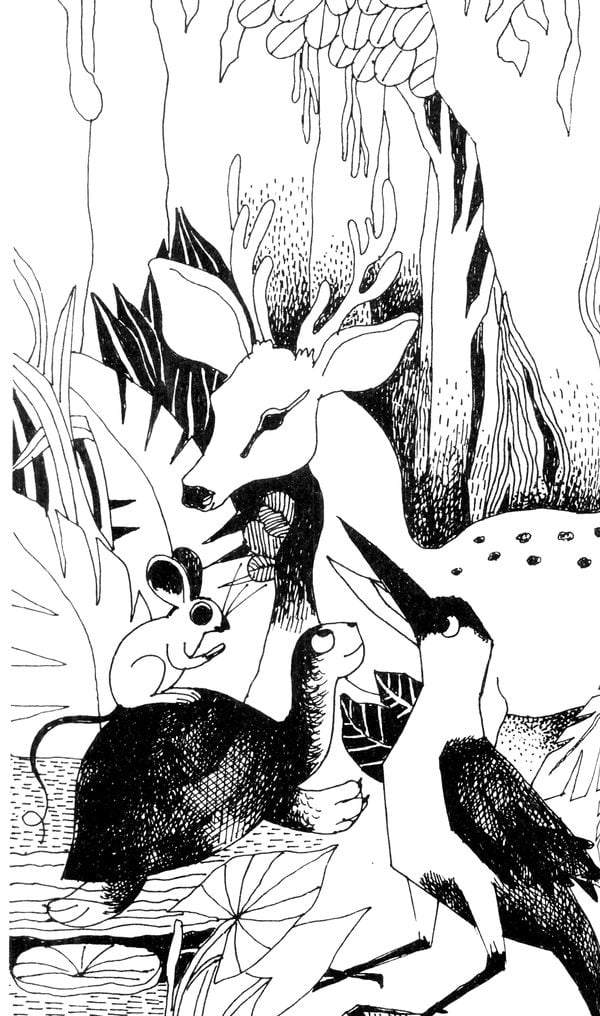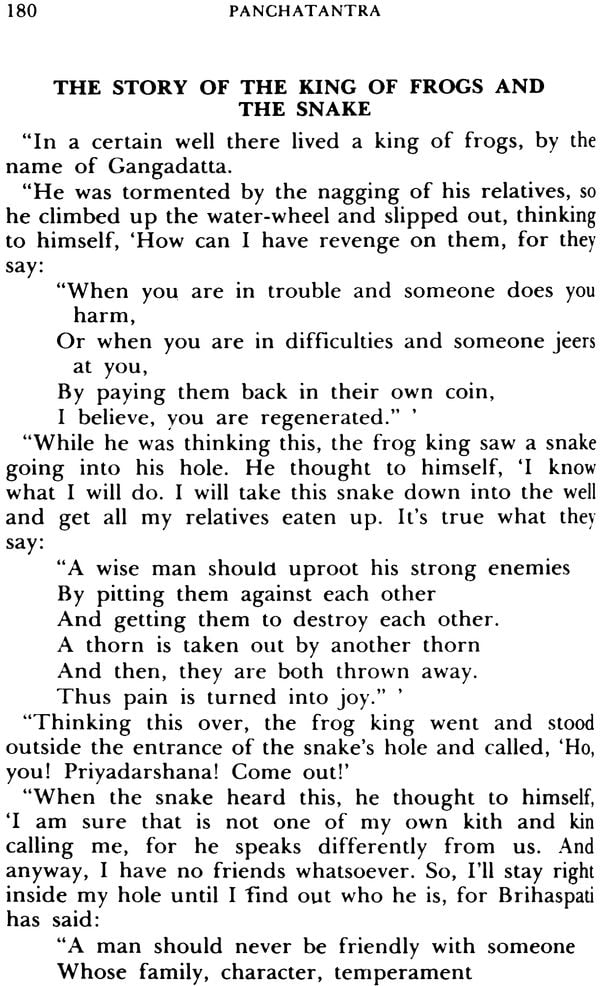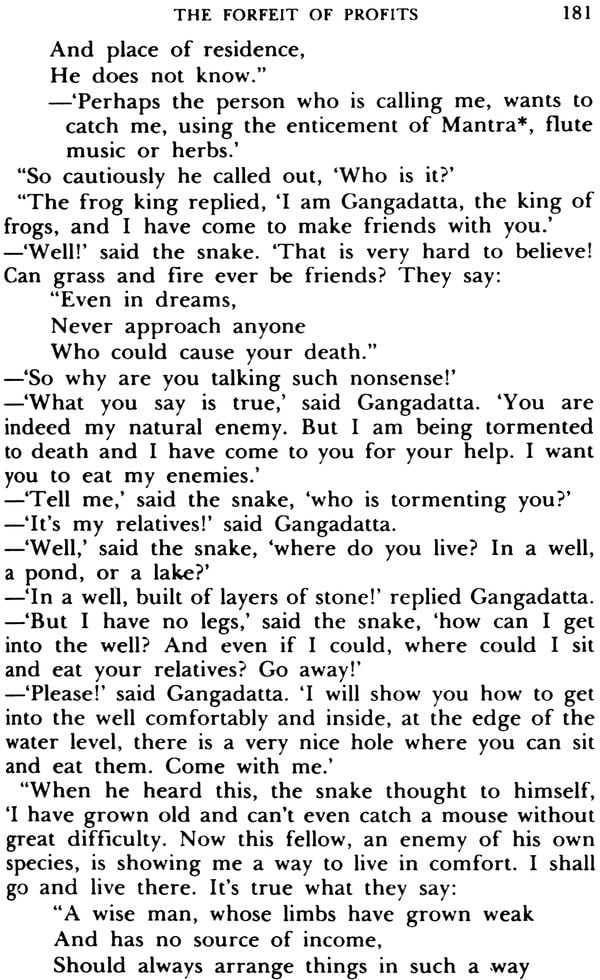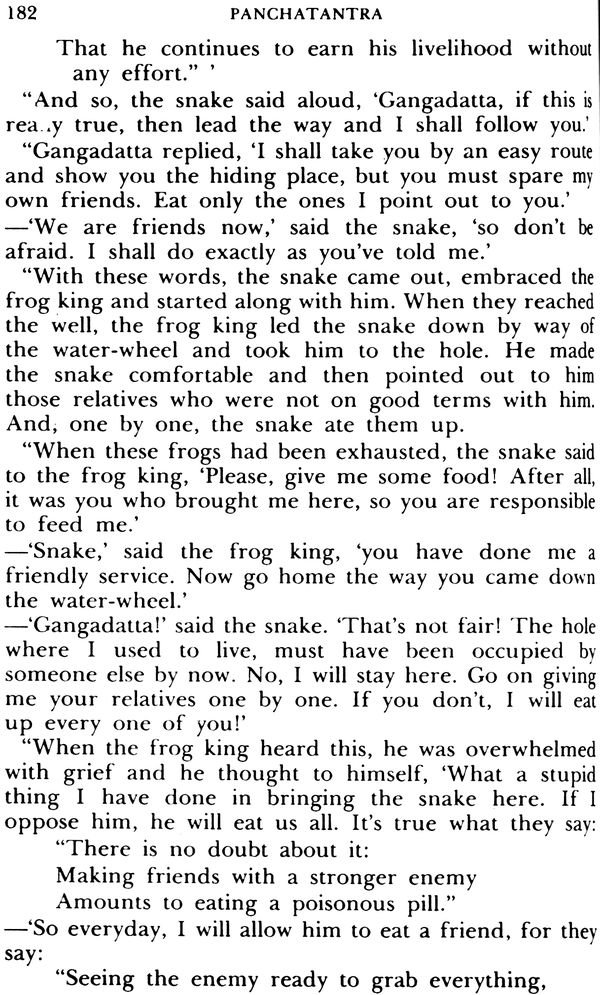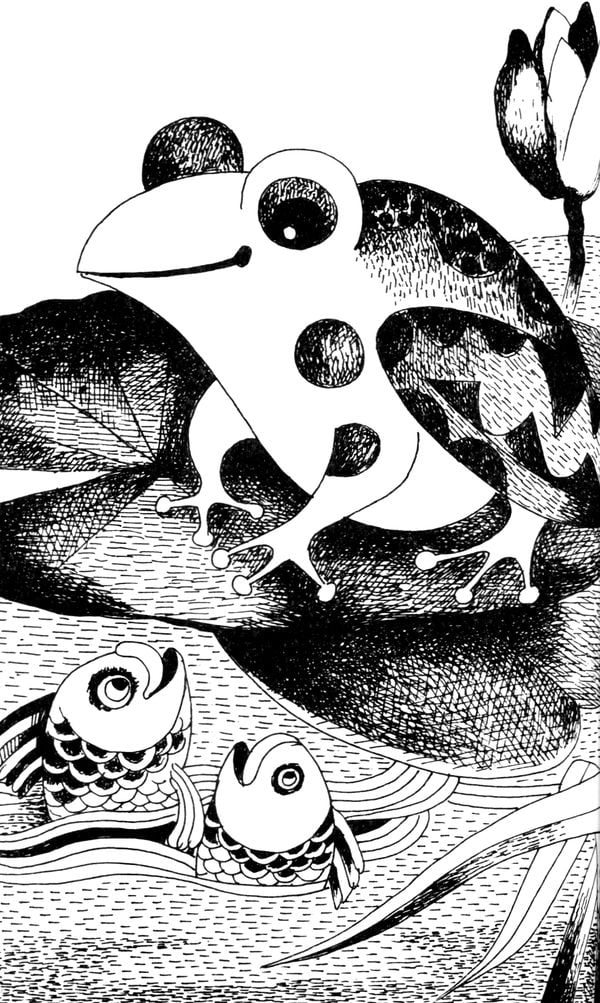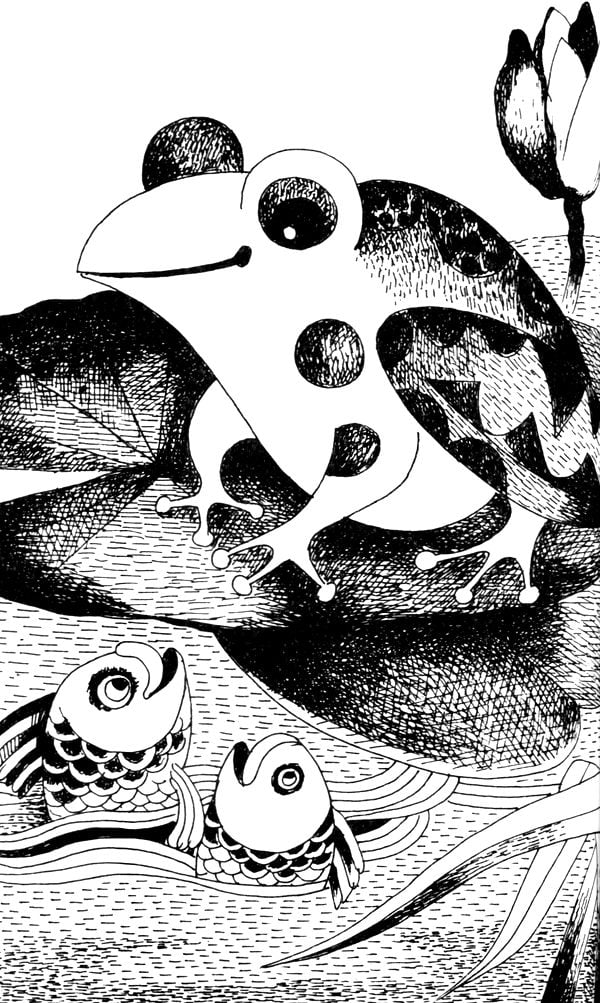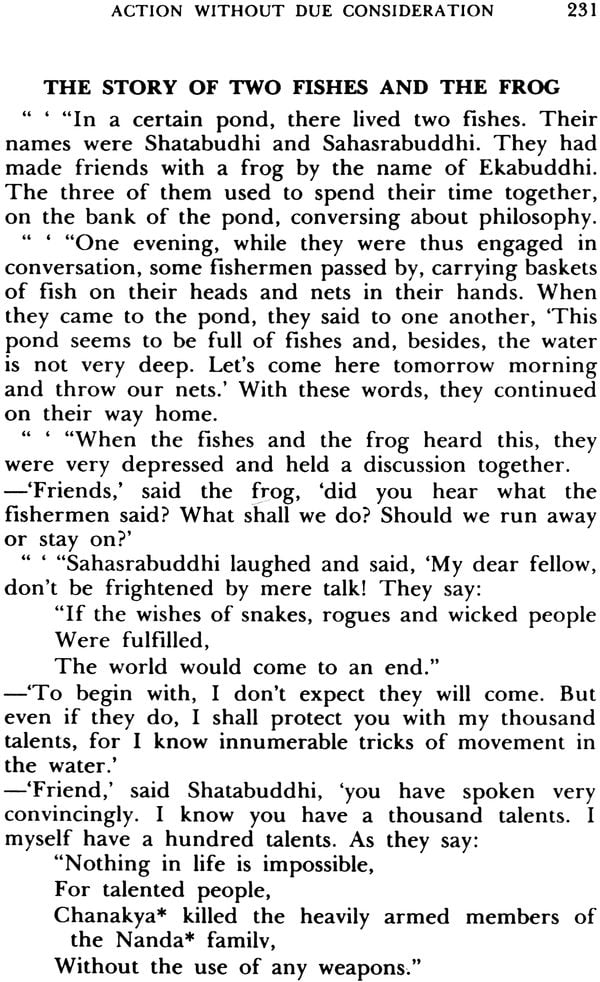
Panchatantra
Book Specification
| Item Code: | IDI807 |
| Author: | Pandit Vishnu Sharma Translated by G. L. Chandiramani |
| Publisher: | Rupa Publication Pvt. Ltd. |
| Edition: | 2019 |
| ISBN: | 9788171670659 |
| Pages: | 258 (Illustrated in B/W Figures: 6) |
| Cover: | Paperback |
| Other Details | 8.3 |
| Weight | 260 gm |
Book Description
Preface
The original text of the Panchatantra in Sanskrit was probably written about 200 B. c. by a great Hindu scholar, Pandit Vishnu Sharma. But some of the tales themselves must be much older, their origin going back to the period of the Rig-Veda and Upanishads (from 1500 B. C. to 500 B. C.). According to some scholars of the Indo-European languages, the Panchatantra is the oldest collection of Indian fables surviving.
In course of time, travellers took these stories with them to Persia and Arabia and finally through Greece, they reached Europe. It is surmised that a version of the Panchatantra was composed in the Pahlavi language of pre-Islamic Iran sometime in the 6th century A. D., being followed by an Arabic one in the 8th century A. D. The Greek translation was made towards the close of the 11th century A. D. from which it was translated into various European languages. This accounts for the fact that to many Westerners, some of the stories have a familiar ring. So far it has been translated into 50 or more languages of the world.
The gypsies, whose Indian origin is well established, also helped in spreading these tales in Europe.
The Panchatantra is essentially connected with one of the branches of science known by the Indians as the 'Nitishastra' which in Sanskrit means 'A book of wise conduct in life'. It attempts to teach us, how to understand people, how to choose reliable and trust-worthy friends, how to meet difficulties and solve peace and harmony in the face of hypocrisy, deceit and many pitfalls in life.
The Panchatantra is woven round the frame of a tale of a king who entrusts his three 'dud' sons to a learned man, a Brahmin, called Pandit Vishnu Sharma, to enlighten their minds within six months. The Brahmin promises to educate them and takes them to his 'ashrama' (hermitage). There he recites to them his specially composed tales divided into five Tantras (in Sanskrit: Pancha=five and Tantra=systems or parts) of how to deal with people in life.
The language of the author is both artistic and elegant. The tale is narrated in prose while the exposition of a philosophical and moral theme is put in verse; maxims or wise sayings are also expressed in verse, which either sums up the narration or introduces the next tale.
The story-teller's art sugars the pill of his sober philosophy. He sets story within story and keeps us waiting for the sequels and so leads us on through the five 'tantras.' As one fable follows another, people and animals are constantly changing places and they share the same characteristics of love and hatred, compassion and wit, selfless courage and base cowardice, generosity and meanness. Each story has a moral and philosophical theme which has stood the test of time and so is true even in modern time - an age of atomic fear and madness.
The Panchatantra is a rare book, for in no book will you find philosophy, psychology, politics, music, astronomy, human relationship, etc., all discussed together in such a simple and yet elegant style. This is exactly what Pandit Vishnu Sharma had in mind, to give as much knowledge to the princes as possible. And no doubt not only the princes but also millions of listeners and readers for the last 2,200 years have benefited from this most unique book.
The book is intended for the adult mind, though children will love it if helped; it contains a fountain of India's philosophical wisdom - a fountain of nectar.
Translator's Note
Despite my own strong conviction that the Panchatantra has a vital message for the world today, I would probably never have undertaken the translation of the Panchatantra into English and German had it not been for the encouragement of my "guru", Professor (Dr.) S.B. Hudlikar (Heidelberg, W. Germany).
Perhaps similar attempts have been made by men of superior talent and wisdom, but I have made a modest attempt, working on the text for seven years, to bring out a translation in modern English which would remain true to the spirit of the Sanskrit text, though I have been highly conscious of my own inadequacies in the face of such a task.
The present form of the Sanskrit text, subjected as it has been, over the ages, to constant revision and adaptation, presents a sizeable problem to any would-be translator.
Several illogicalities and non-sequiturs seem to have crept into the text with the passage of time, naturally enough, when one considers that, until modern times, these stories have been for telling, rather than reading, and they have been told time and again all over India and in many parts of the world, each story-teller using his own particular artistry to beguile his listeners, adding a little detail here and there, as he thought fit. So it is that, from the reader's point of view, sometimes the construction of the text is weak (for instance, the fifth tantra is loosely constructed and incomplete; Chakradhara's story ends abruptly and we never do return to the Brahmin's wife or the judges who were telling these stories).
The present translator attempts to reproduce as accurately as possible the Sanskrit text in English but in a logical and readable form. In the interests of continuity, short sections have been omitted sentences rearranged and, occasionally, a linking sentence added But every attempt has been made to keep such amendments to the minimum, though keeping in view, at the same time, to retain the flavour of the original text, which is both artistic and elegant.
All the Sanskrit names, designations and exclamations have been retained in the translation to preserve the Indian atmosphere and tradition of the book. The writer, Pandit Vishnu Sharma, seems to have chosen the names with great, care, for everywhere they have got some definite relationship to the character or incident in the story. At several places, there is a distinct significance or satire in the meaning of the Sanskrit names. I would therefore request the reader to refer to glossary. I hope it will help him towards a thorough understanding of this ancient Indian Classic to enable more enjoyable reading.
The glossary has been provided for reference at the end of the book. The pronunciations of the Sanskrit words are comparatively simple if each word is split into syllables and then pronounced.
My desire is to establish a direct relationship with the reader. I would welcome comments and criticisms they will help me to improve upon the present translation when bringing out the next edition.
The present translation is the result of the talent, excellent team-work and experience of my friends who have affectionately guided me. They are all experts in their own respective fields.
Above all, Goddess Saraswati has smiled on me, and is to her that I humbly dedicate this book.
For my own part, I claim no credit. I have simply performed the task of a bee that collects honey from fragrant flowers.
Back Of The Book
Panchatantra was probably written about 200 BC by the great Hindu scholar Pandit Vishnu Sharma. It is the oldest collection of Indian fables surviving.
Panchatantra means "the five books." It is a "Nitishastra" which means book of wise conduct in life.
Panchatantra is written in the form of a chain of simple stories, and each story has a moral and philosophical theme which has stood the test of time and so is true even in modern times-an age of atomic fear and madness.
It guides us how to attain success in life by understanding human nature.
Panchatantra is commonly available in an abridged form written for children. Here is the complete translation of the book as written by Vishnu Sharma.
| Conflict amongst friends | |
| The story of the monkey and the log | 6 |
| The story of the jackal and the drum | 12 |
| The story of the merchant Dantila | 17 |
| The story of the jackal and the Sanyasi | 23 |
| The story of the cobra and the crow | 28 |
| The story of the heron and the crab | 29 |
| The story of the lion and the hare | 32 |
| The story of the bug and the flea | 40 |
| The story of the jackal who fell into a vat of indigo dye | 42 |
| The story of the lion, the camel, the jackal and the crow | 47 |
| The story of the tittibha birds and the sea | 52 |
| The story of the turtle who fell off the stick | 53 |
| The story of the three fishes | 55 |
| The story of the elephant and the sparrow | 58 |
| The story of Vajradaunstra the lion and Chaturaka the jackal | 65 |
| The story of the monkey and a bird called Suchimukha | 70 |
| The story of the sparrow and the monkey | 72 |
| The story of the Dharmabuddhi and Papabuddhi | 75 |
| The story of the foolish heron, the black snake and the mungoose | 79 |
| The story of the iron balance and the merchant's son | 81 |
| The story of the king and the foolish monkey | 84 |
| The story of the thief and the Brahmins | 85 |
| Winning of friends | |
| The story of the Sadhu and the mouse | 99 |
| The story of mother Shandili | 102 |
| The story of the merchant's son | 107 |
| The story of Somilaka | 113 |
| Crows and owls | |
| The story of the enmity between crows and owls | 131 |
| The story of the hares and the elephants | 134 |
| The story of the Hare and the partridge | 137 |
| The story of the Brahmin and the three crooks | 141 |
| The story of the Brahmin and the cobra | 146 |
| The story of the dove and the hunter | 149 |
| The story of the old merchant, his young wife and the thief | 153 |
| The story of the Brahmin, the thief and the rakshasa | 155 |
| The story of the snake in the ant-hill and the snake in the belly of the prince | 157 |
| The story of the female mouse | 160 |
| The story of the hunter and the bird whose droppings turned to gold | 164 |
| The story of the lion, the jackal and the cave | 166 |
| The story of the frogs and the black snake | 170 |
| The forfeit of profits | |
| The story of the king of frogs and the snake | 180 |
| The story of the lion and the donkey | 186 |
| The story of the potter called Yudhisthira | 190 |
| The story of the lioness and the young jackal | 192 |
| The story of Nanda and Vararuchi | 195 |
| The story of the donkey and the washerman | 197 |
| The story of the farmer's wife | 200 |
| The story of the camel with a bell round his neck | 204 |
| The story of the jackal, the lion, the leopard and the tiger | 207 |
| The story of the dog in a foreign country | 210 |
| Action without due consideration | |
| The story of the Brahmin's wife and the mongoose | 217 |
| The story of Chakradhara | 219 |
| The story of the Brahmins who put life into the lion | 224 |
| The story of the four learned fools | 226 |
| The story of two fishes and the frog | 231 |
| The story of the singing donkey | 233 |
| The story of Mantharaka, the weaver | 236 |
| The story of Soma Sharma's father | 239 |
| The story of King Chandra | 241 |
| Glossary | 247 |
